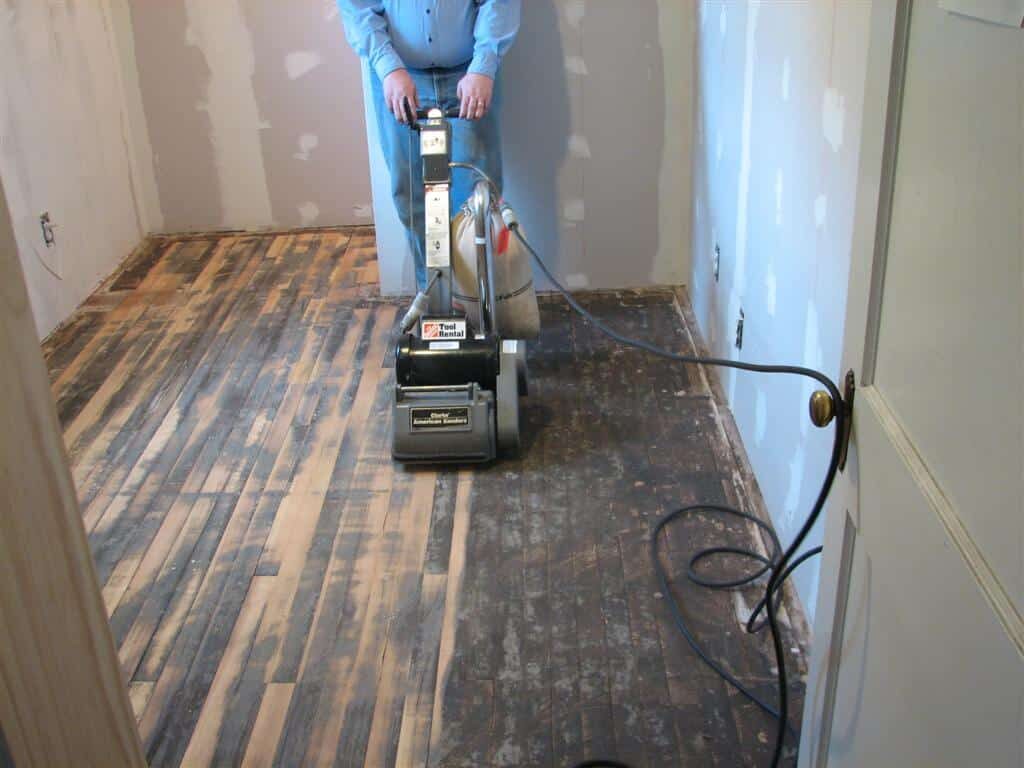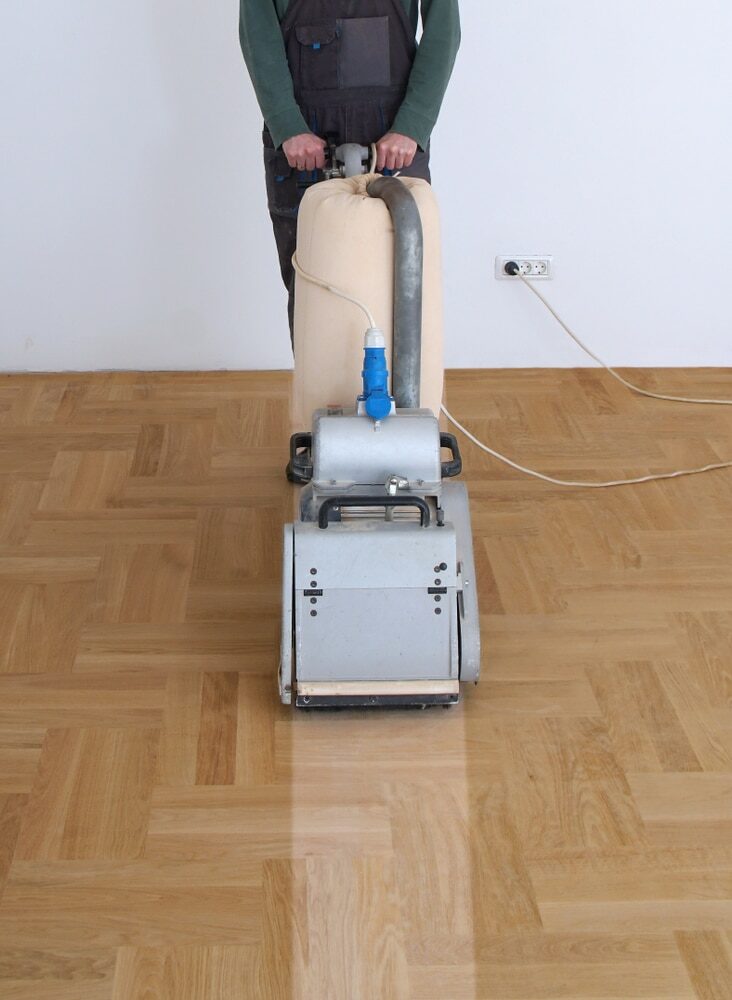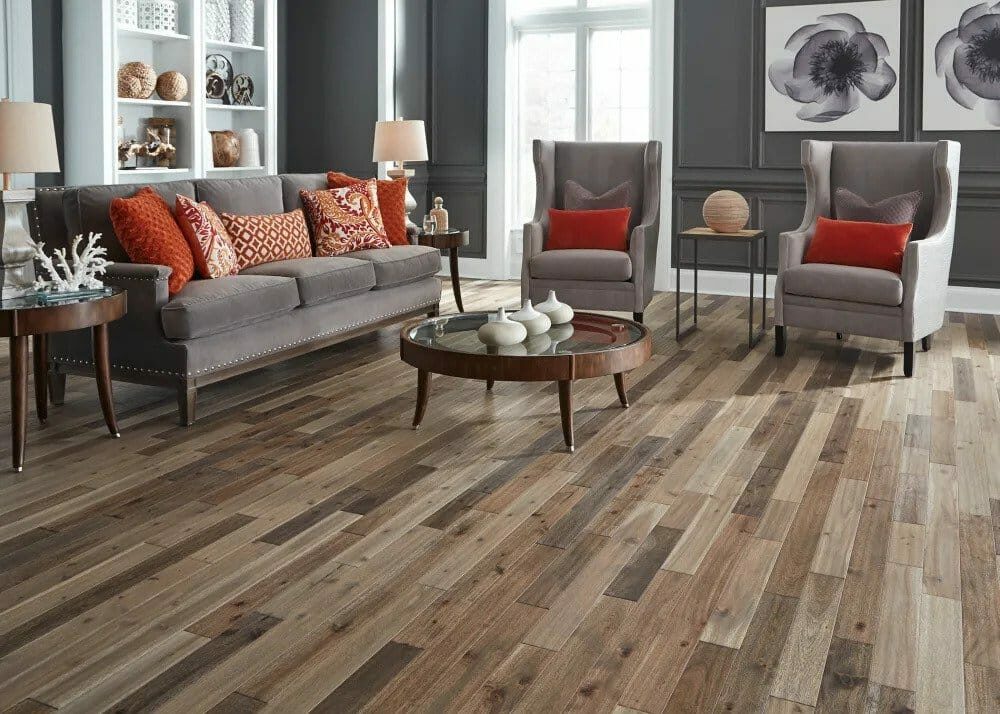London:
Nationwide:
Sustainable School Floors: The Benefits of Restoring Over Replacing Granwood Flooring
Posted on April 26, 2024
Granwood School Floors
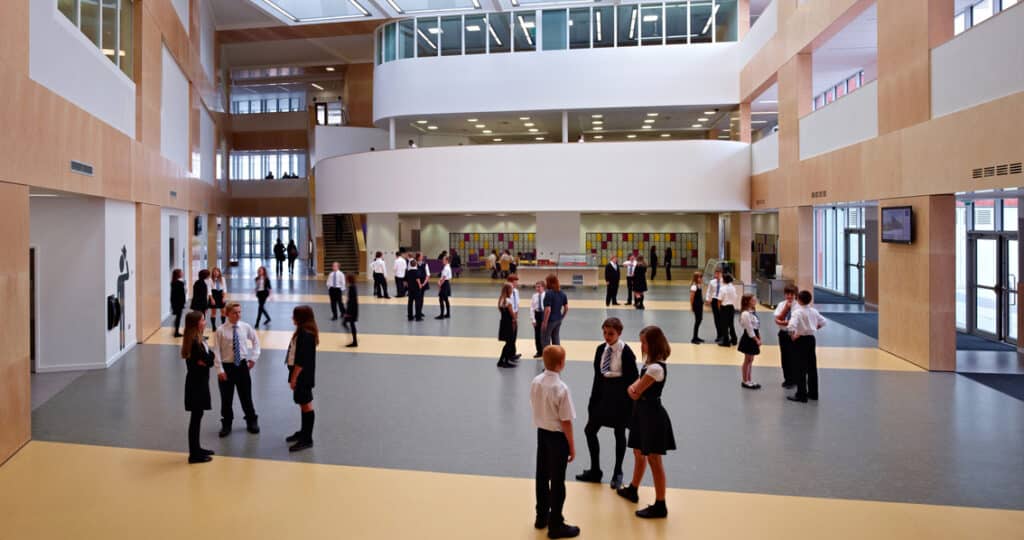
Sustainable School Flooring: Choosing Restoration Over Replacement for Granwood Floors
Welcome to our exploration of sustainable practices in school infrastructure, focusing on a key aspect often overlooked: flooring. Granwood flooring, prevalent in educational institutions for its durability and aesthetic appeal, is at the forefront of our discussion. In this post, we delve into the significant advantages of restoring rather than replacing Granwood floors in schools.
Replacing school floors is not only costly but also has a considerable environmental impact. As sustainability becomes a priority in educational policies, exploring restoration as a viable alternative is crucial. By choosing to restore Granwood floors, schools can reduce waste, lower carbon footprints, and uphold their commitment to environmental stewardship.
This post will guide you through the what, why, and how of Granwood flooring restoration, offering insights into its cost-effectiveness, environmental benefits, and practical steps to rejuvenate this unique flooring option. From detailed case studies to expert maintenance tips, we aim to equip school administrators and facilities managers with the knowledge needed to make informed decisions about their flooring solutions.
Join us as we explore how restoring Granwood floors not only benefits the environment but also enhances the educational experience by preserving quality and heritage in our schools.
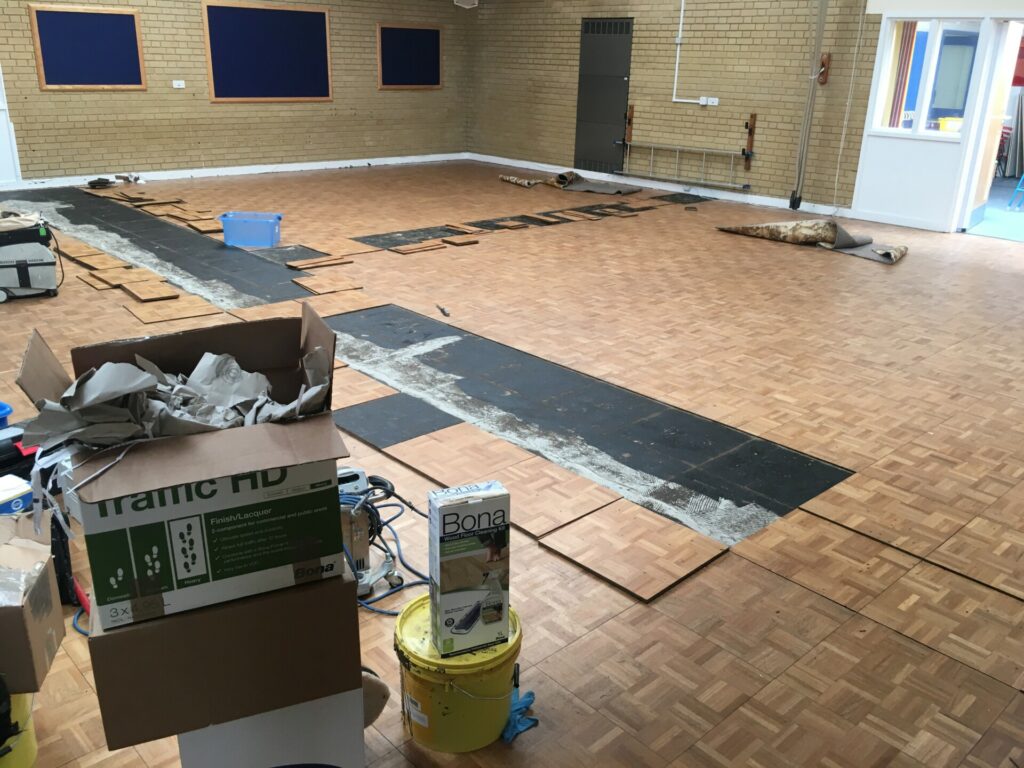
What is Granwood Flooring?
Granwood flooring is a composite flooring material widely recognized for its durability, cost-effectiveness, and aesthetic appeal, making it a popular choice in schools, sports halls, and public buildings. It is composed of a unique blend of sawdust, cement, and fillers, which are compressed and then finished with a surface sealant to enhance its resistance to wear and tear.
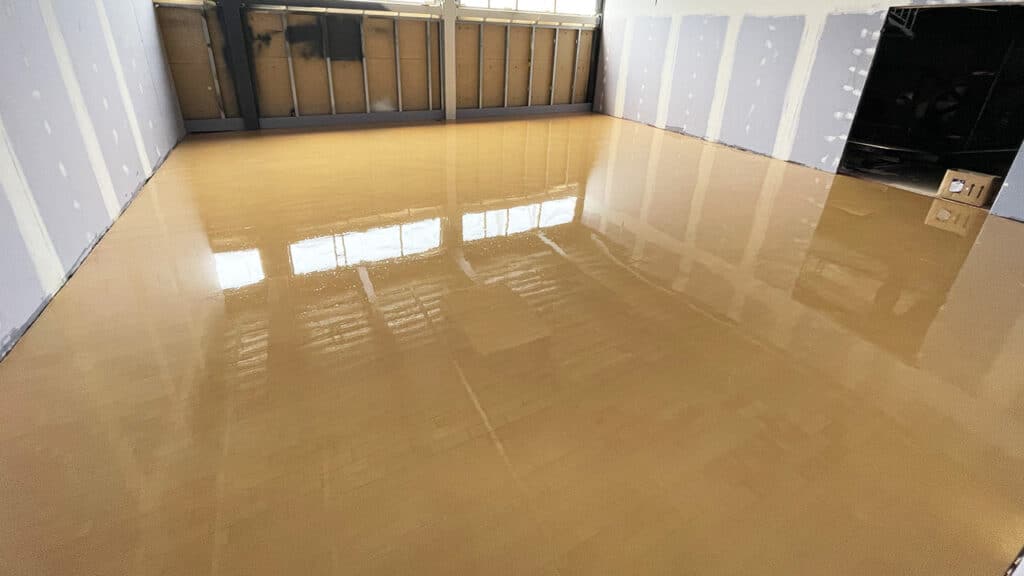
The composition of Granwood flooring provides several notable benefits:
- Durability: Granwood floors are extremely hard-wearing, capable of withstanding heavy foot traffic and the rigours of daily use in high-demand environments like schools and gyms.
- Maintenance: These floors are relatively easy to maintain, requiring regular sweeping and occasional polishing to keep them looking their best. Their robust nature means they are resistant to stains and scratches, which contributes to their longevity.
- Safety and Performance: The non-slip surface makes Granwood flooring safe for use in various settings, particularly where physical activity is prevalent. The floor’s slight give and resilience also enhance performance in sports applications, providing adequate cushioning and bounce.
- Acoustic Properties: Granwood flooring offers good acoustic performance, reducing noise levels, which is particularly beneficial in multi-use spaces that host events and activities requiring minimal sound interference.
- Aesthetics: Available in a variety of colors and patterns, Granwood flooring can be customized to fit any room’s decor, contributing to a pleasant and attractive interior environment.
- Environmental Impact: The materials used in Granwood flooring are sustainable, with sawdust—a byproduct of other wood processing operations—serving as a primary component. This aspect aligns well with environmentally conscious building practices.
Given these characteristics, Granwood flooring remains a preferred choice for educational institutions looking for a sustainable, durable, and functional flooring solution. The ongoing trend towards sustainability in construction and facility maintenance has also seen an increase in the restoration and preservation of existing Granwood floors rather than replacing them, further underscoring the material’s long-term value and environmental benefits.
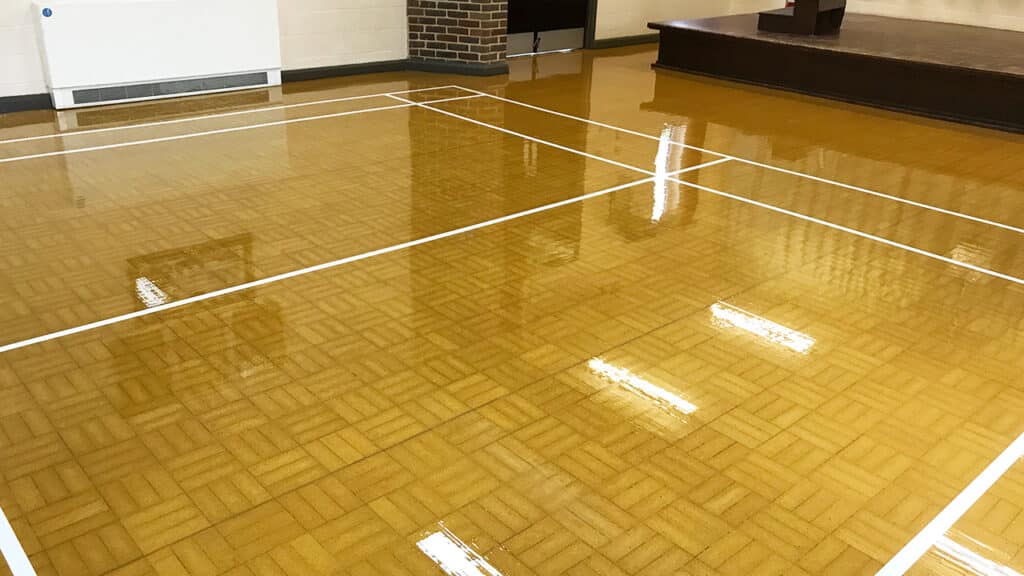
The Environmental Impact of Flooring Replacement
Replacing flooring, particularly in large institutions like schools, can have significant environmental impacts. This stems from various factors, including the production processes of new materials, the disposal of old flooring, and the energy used throughout these activities. Here’s an in-depth look at these impacts:
- Resource Consumption: The production of new flooring materials requires substantial raw materials—whether wood, vinyl, carpet, or synthetic composites like Granwood. Harvesting natural resources often involves deforestation, mining, and other extraction processes that may lead to habitat destruction and biodiversity loss.
- Energy Use and Emissions: Manufacturing new flooring materials is energy-intensive and generates considerable greenhouse gas emissions. This includes everything from operating machinery for raw material extraction to the energy used in manufacturing processes and the transportation of the finished product to market.
- Waste Production: The removal of existing flooring generates waste, much of which may not be biodegradable or recyclable. For example, carpets and padding can contain synthetic fibres and chemicals that might end up in landfills, potentially leaching toxins into the soil and groundwater. Similarly, disposing of non-biodegradable materials like vinyl contributes to long-term waste management challenges.
- Chemical Usage: The installation of new flooring often requires the use of adhesives, sealants, and finishes, many of which contain volatile organic compounds (VOCs) and other harmful chemicals. These substances can off-gas into the environment, deteriorating indoor air quality and posing health risks to those exposed.
- Carbon Footprint: Every phase of the flooring lifecycle—from production to disposal—contributes to its carbon footprint. This includes transportation emissions from distributing new flooring and transporting waste materials to disposal sites.
- Loss of Embedded Energy: When flooring that is still functional is replaced, the energy embedded in its production, transport, and installation is lost. This represents an inefficient use of the energy and resources already invested in the existing flooring.
Given these environmental considerations, restoring existing flooring where possible, especially materials like granwood that are durable and sustainable, presents a compelling alternative. Restoration can significantly reduce the environmental impact by extending the life of the flooring, minimizing waste, and conserving the resources and energy already embodied in the material. Schools and other institutions looking to enhance their environmental stewardship often find that floor restoration aligns well with sustainability goals, offering a practical way to decrease overall environmental impact while maintaining facility standards.
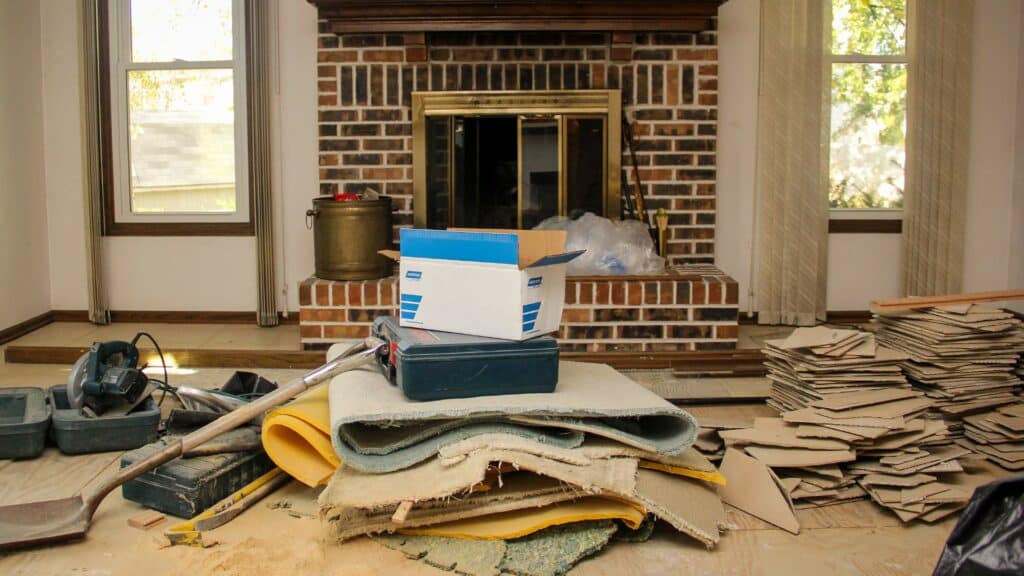
Benefits of Restoring Granwood Floors
Restoring granwood floors, as opposed to replacing them, offers a range of benefits that are both economically and environmentally favourable, particularly within educational institutions like schools. Here are some of the key advantages:
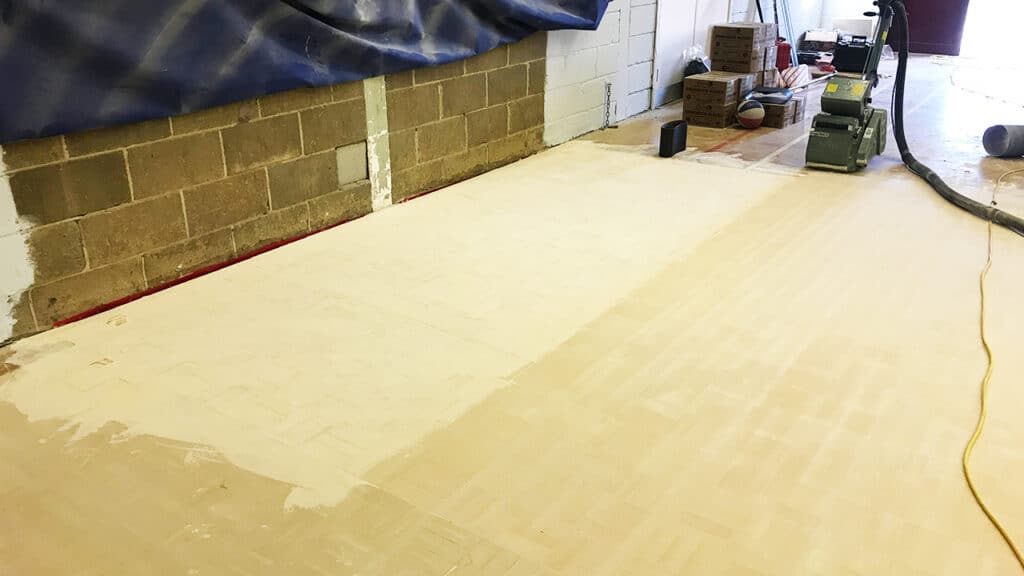
- Cost-effective: Restoration of granwood flooring is significantly less expensive than replacing it with a new material. The process generally involves sanding down the existing surface and reapplying a finish, which uses fewer resources and requires less labour than a full replacement. This makes restoration a budget-friendly option for schools that need to manage their maintenance expenses carefully.
- Environmental Impact: Restoring Granwood floors has a lower environmental footprint compared to full replacement. It reduces the demand for new raw materials, lowers the energy consumption associated with manufacturing new flooring, and minimises waste generation. This sustainable approach aligns with green building practices and can help schools reduce their overall environmental impact.
- Extended Lifespan: Granwood flooring is known for its durability, but over time, the surface can wear down and become less aesthetically pleasing. Restoration refreshes the appearance and functionality of the floor, extending its lifespan and delaying the need for replacement. This is particularly beneficial in high-traffic areas such as school halls and sports facilities.
- Maintaining Aesthetics: A well-maintained Granwood floor can significantly enhance the visual appeal of a space. Restoration can bring back the original colour and finish of the floor, improving the overall look of the environment. This is important in schools where the appearance of facilities can impact the learning atmosphere and school pride.
- Quick Turnaround: The process of restoring a Granwood floor is usually faster than replacing it entirely. This is a critical consideration for schools, where long downtimes can disrupt classes and other activities. Restoration allows for areas to be back in use much sooner, minimising inconvenience.
- Improved Safety and Performance: Restoration not only enhances the appearance of Granwood flooring but also its performance. Refinishing the surface can improve its grip and resilience, which is especially important in sports areas to prevent injuries and enhance athletic performance.
- Customisation: During the restoration process, there is an opportunity to customise the finish to better suit current needs or aesthetic preferences, such as changing the colour or pattern of the sealant. This flexibility allows schools to update their facilities without incurring the extensive costs associated with new flooring.
By choosing to restore rather than replace Granwood floors, schools can enjoy a range of practical and environmental benefits, making it a smart choice in the context of sustainable facility management.
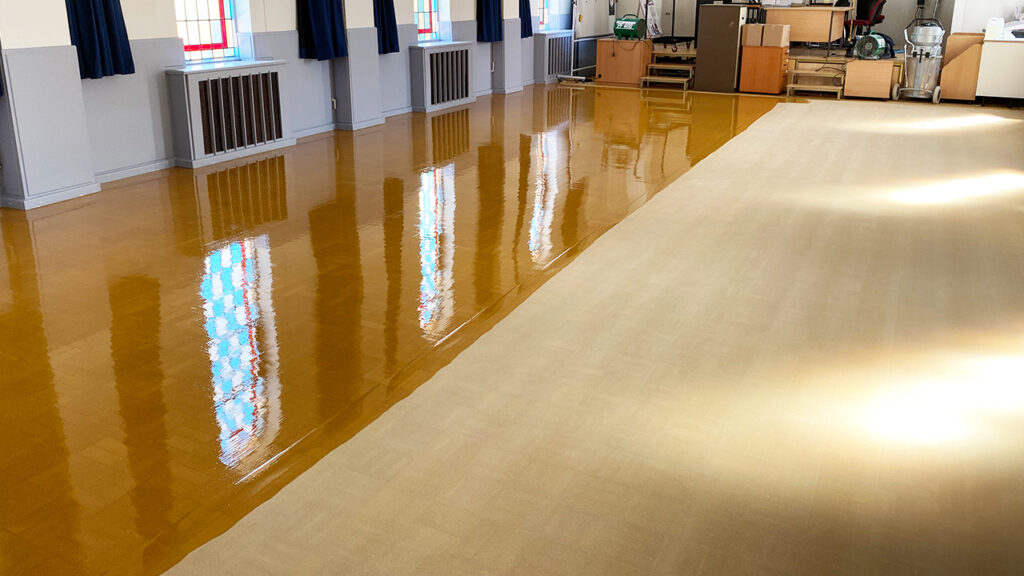
How to Restore Granwood Flooring
Restoring Granwood flooring is a detailed process that can revitalise an old floor, making it look almost as good as new. Here’s a step-by-step guide on how to restore Granwood flooring effectively:
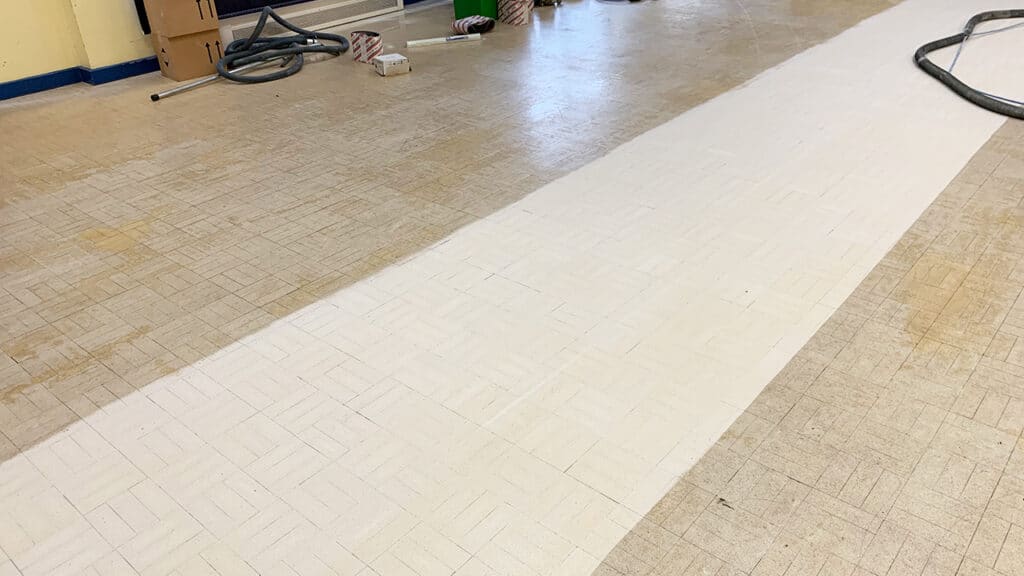
Assessment of the Floor’s Condition
- Inspect the floor for any major damages, like deep scratches, chips, or areas where the floor may have lifted or become uneven. Determine the extent of wear and any specific issues that need addressing.
Preparation of the area
- Clear the space by moving all furniture and obstacles.
- Clean the floor thoroughly to remove dirt, dust, and debris. This helps in assessing any hidden damages and ensures a smooth restoration process.
Sanding
- Sanding the floor is crucial. Use a professional-grade floor sander. Start with coarse-grit sandpaper to remove the old sealant and surface imperfections, then progressively move to finer grits to smooth the floor.
- Vacuum between sandings to remove all dust and particles, ensuring each new pass is as effective as possible.
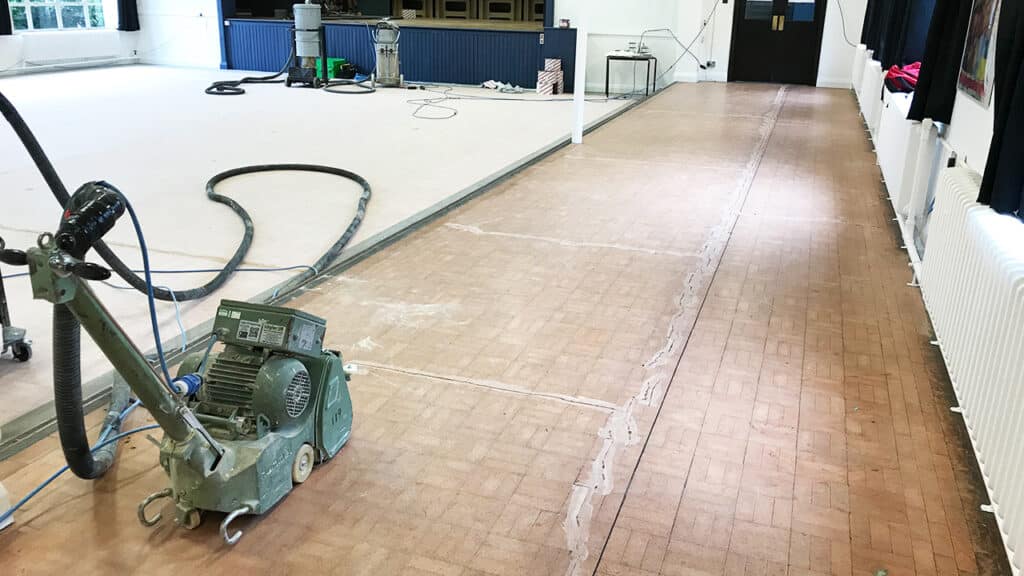
Repairing Damages
- Fill any holes or cracks with a Granwood-specific filler. Make sure the filler matches the colour of the original floor to maintain aesthetic consistency.
- Allow the filler to dry completely before proceeding to the next step.
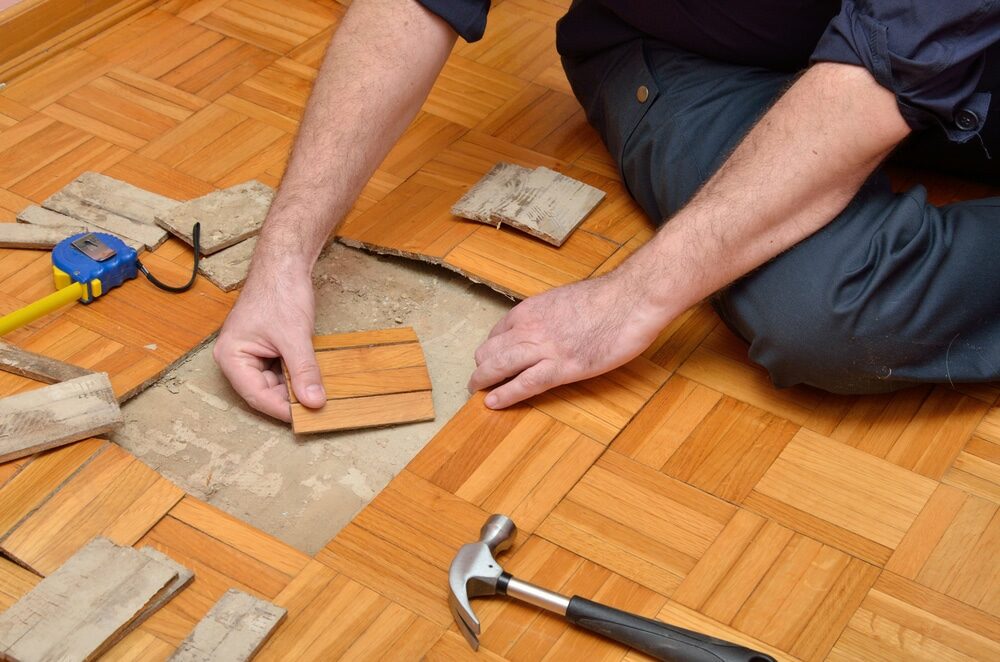
Sealing
- Apply a new layer of sealant to protect the floor and enhance its appearance. Use a sealant that is compatible with Granwood flooring. It’s important to choose a high-quality sealant that offers durability and resistance to wear.
- Apply multiple coats of sealant, letting each coat dry thoroughly before applying the next. Follow the manufacturer’s guidelines for the best results.
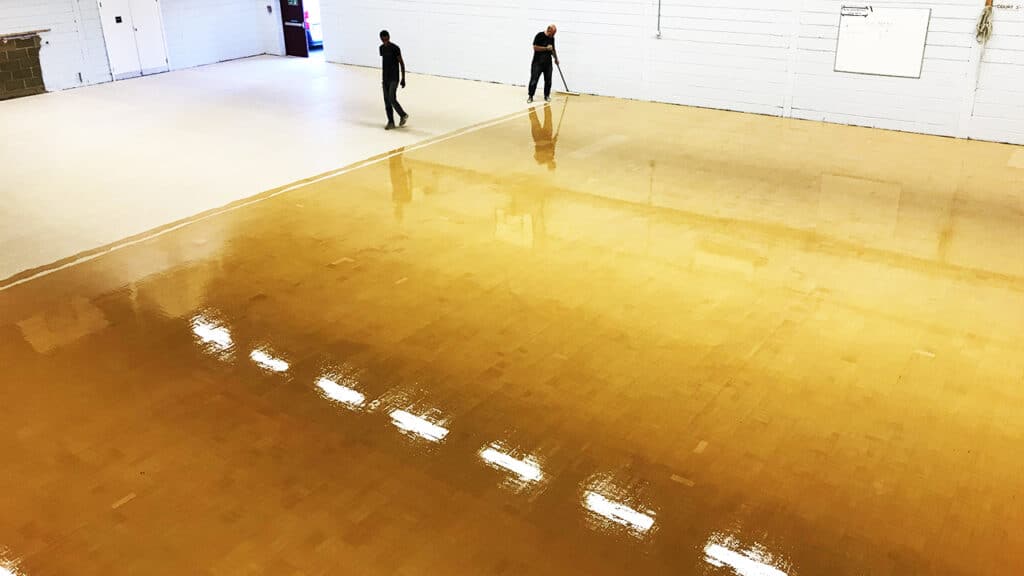
Finishing Touches
- Buff the floor to a smooth finish. This enhances the sealant’s protective qualities and leaves the floor with a desirable sheen.
- Inspect the floor to ensure that the sealant is evenly applied and there are no missed spots.
Maintenance Tips Post-Restoration
- Regular cleaning with suitable products that will not degrade the sealant.
- Immediate cleaning of spills is necessary to prevent staining.
- Routine inspections for wear and tear to address any issues before they require another full restoration.
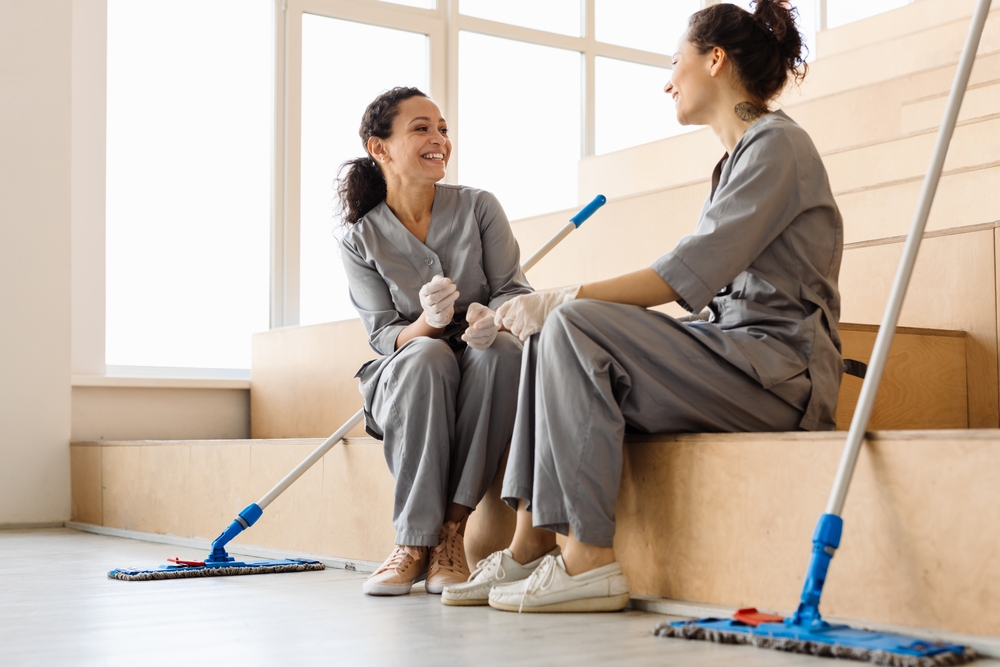
By following these steps, you can effectively restore a Granwood floor, extending its life and maintaining its look and functionality. This process not only adds aesthetic value to the space but is also a cost-effective solution compared to floor replacement, making it an ideal choice for environments like schools and sports facilities.
Maintenance Tips for Granwood Floors
Maintaining Granwood floors properly can significantly extend their lifespan and keep them looking their best. Here are some key maintenance tips to help ensure that Granwood floors in schools and other facilities remain in top condition:
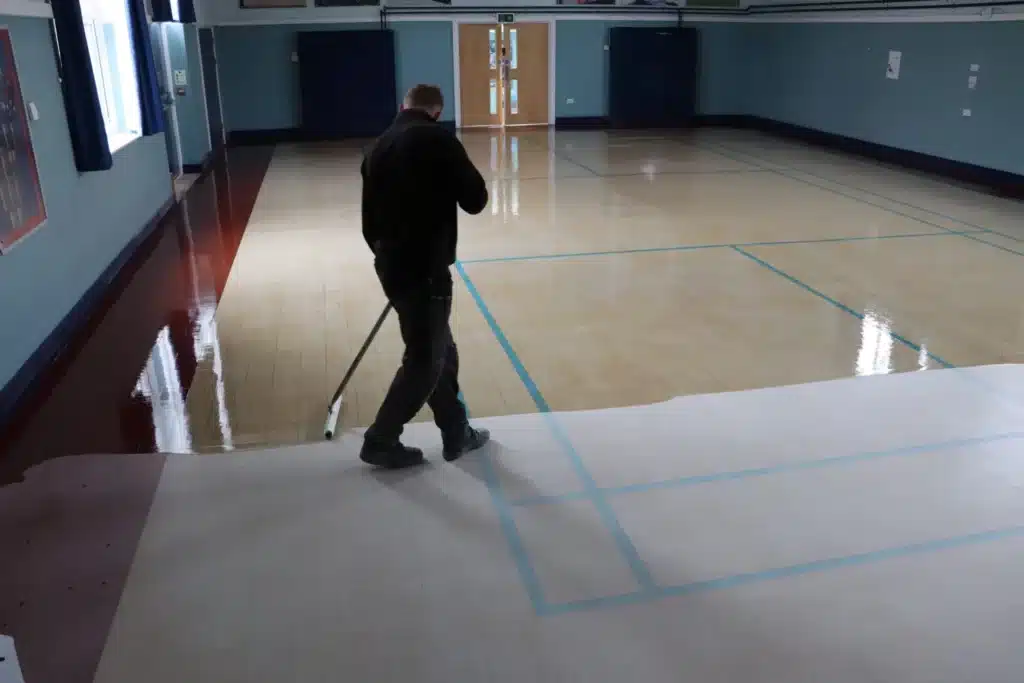
Regular Cleaning
- Daily Sweeping: Use a soft-bristled broom or a dry microfiber mop to sweep away dirt, dust, and debris. This prevents abrasive particles from scratching the floor surface.
- Weekly Damp Mopping: Use a well-wrung mop and a mild detergent or a cleaner specifically recommended for Granwood floors. Avoid using excess water, as it can seep into seams and damage the floor.
Immediate Spill Response
- Clean Spills Immediately: Any liquid spills should be wiped up promptly to prevent staining and slipping hazards. Use a damp cloth or sponge to blot the spill.
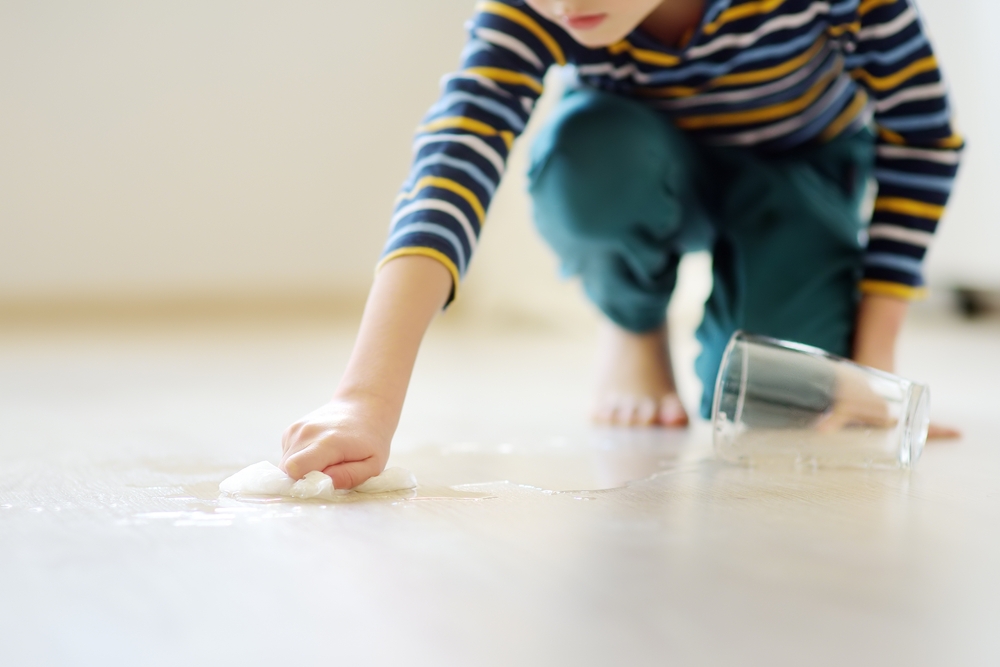
Use protective pads.
- Furniture Pads: Attach felt pads to the legs of chairs, desks, and other movable furniture to prevent scratches and gouges when they are moved.
Proper Matting
- Entrance Mats: Place high-quality mats at all entrances to capture dirt and moisture from shoes before they come into contact with the flooring. This reduces the amount of abrasive material that can wear down the floor surface.
Periodic deep cleaning
- Professional Cleaning: Depending on the traffic and use of the area, schedule professional deep cleaning to remove built-up grime that regular cleaning cannot. This also helps to maintain the floor’s aesthetic.
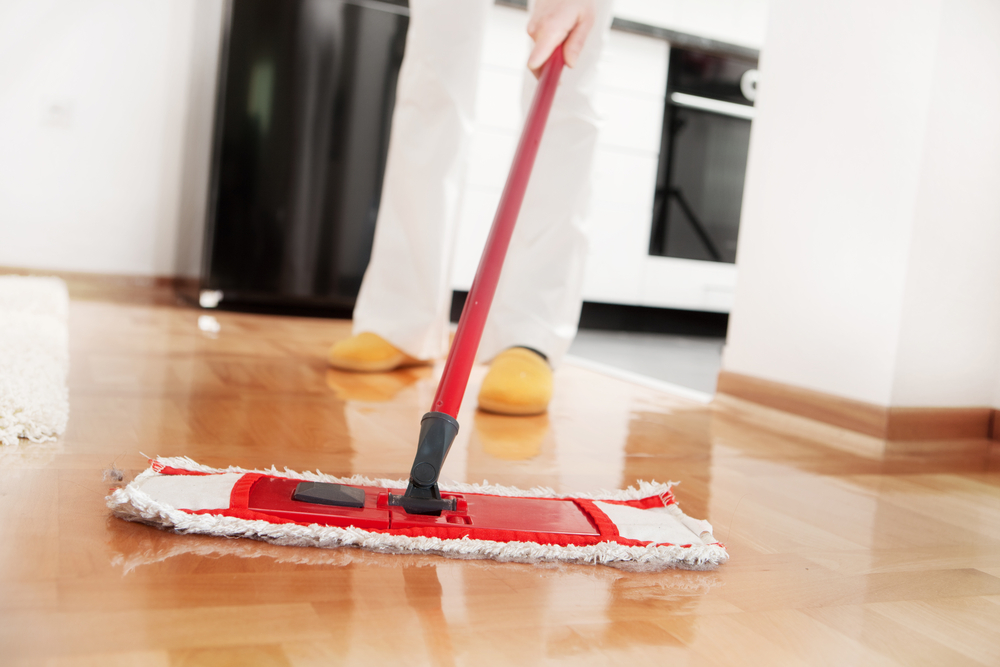
Avoid harmful chemicals.
- Chemical Exposure: Do not use harsh chemicals, bleach, or abrasive cleaners, as these can damage the floor’s sealant and surface. Stick to recommended cleaning products or a simple solution of water and mild detergent.
Regular Inspection
- Check for Damage: Regularly inspect the floor for signs of wear or damage such as lifting, cracking, or significant scratches. Address these issues promptly to prevent further deterioration
Refinishing
- Reapply Sealant: Over time, the sealant can wear down, especially in high-traffic areas. Consider resealing the floor every few years to restore its protective layer and keep it looking fresh.
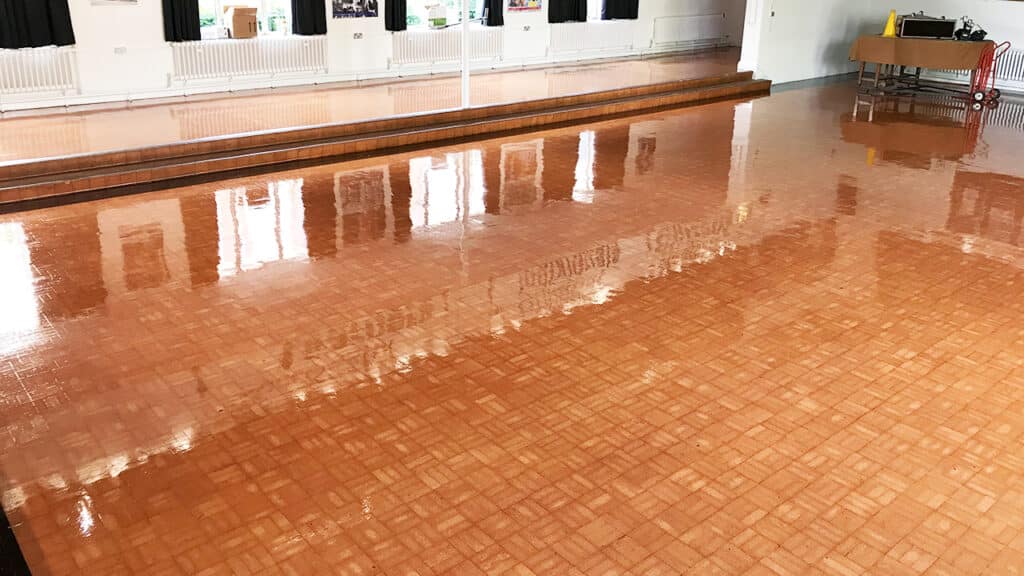
Environmental Controls
- Maintain Humidity and Temperature: Keep the indoor climate consistent, as extreme changes in humidity and temperature can cause the flooring material to expand or contract, leading to damage.
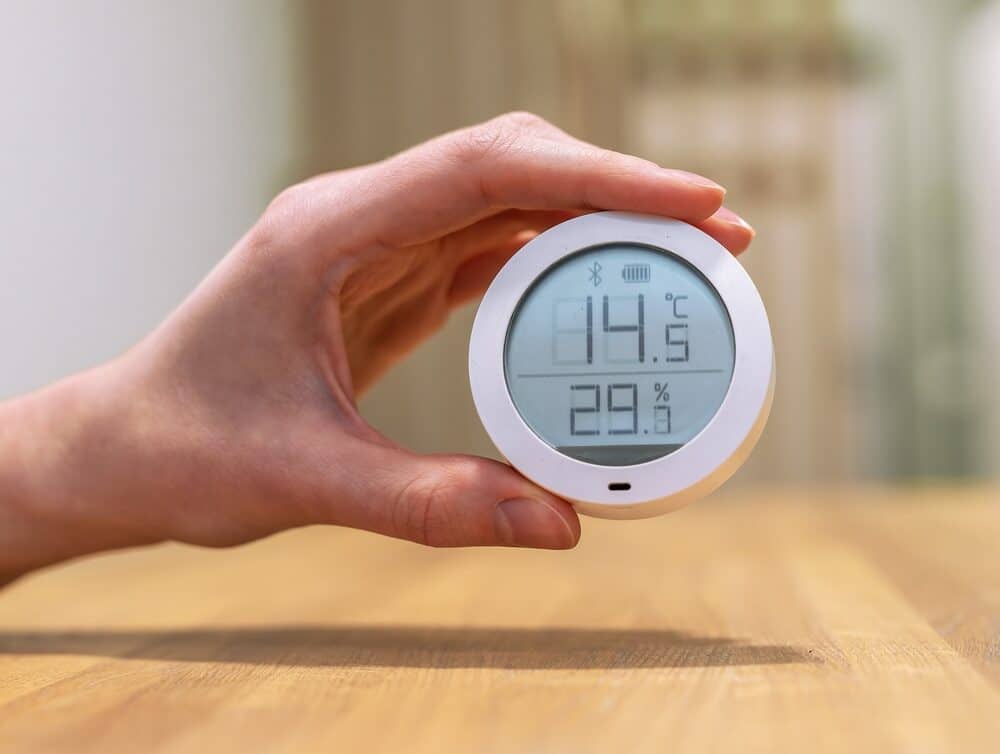
By following these maintenance tips, you can enhance the durability and appearance of Granwood flooring, ensuring it remains a practical and attractive feature of any space for years to come.
Comparison: Restoring vs. Replacing
When it comes to deciding whether to restore or replace Granwood flooring, especially in settings like schools, there are several factors to consider. Each option has its pros and cons, and the best choice depends on the condition of the flooring, budget constraints, and long-term facility goals. Here’s a detailed comparison:
Restoring Granwood Flooring
Pros:
- Cost-effective: Restoration is typically less expensive than full replacement, especially if the subfloor is in good condition and only the surface needs attention.
- Environmental Impact: Restoring flooring conserves resources by utilising the existing material, reducing waste, and minimising the demand for new raw materials and the energy consumption associated with producing and transporting new flooring.
- Less Disruption: The restoration process is generally quicker than a full replacement, meaning less downtime and disruption to daily activities in busy environments like schools.
- Preservation of Originality: Restoration maintains the original aesthetic and historical value of the flooring, which can be important in older buildings or institutions with a significant heritage.

Cons:
- Limited Lifespan Extension: While restoration can significantly extend the floor’s life, it doesn’t provide the same longevity as a new installation, especially if the underlying structure has begun to degrade.
- Recurrent Costs: Floors that are only restored may require more frequent maintenance and subsequent restorations than completely new flooring.
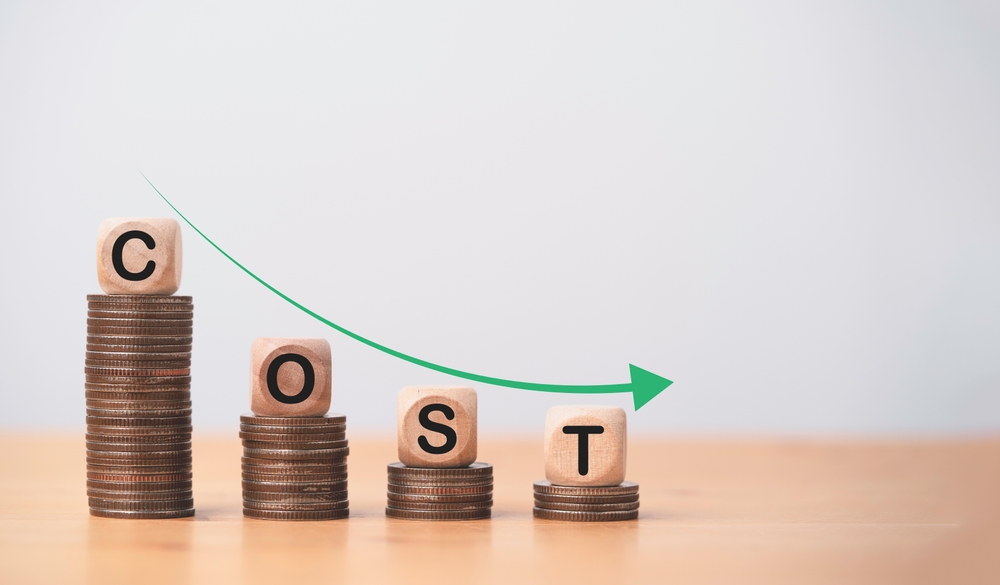
Replacing Granwood Flooring
Pros:
- Longevity: New flooring comes with a fresh lifespan, often accompanied by new warranties and a less frequent need for repairs in the near future.
- Modern Options: Replacing flooring provides an opportunity to upgrade to newer materials that might offer better functionality, efficiency, or compliance with current environmental standards.
- Addressing Underlying Issues: Replacement allows for the correction of any underlying issues with the subfloor or installation errors from the original flooring that restoration might not fix.
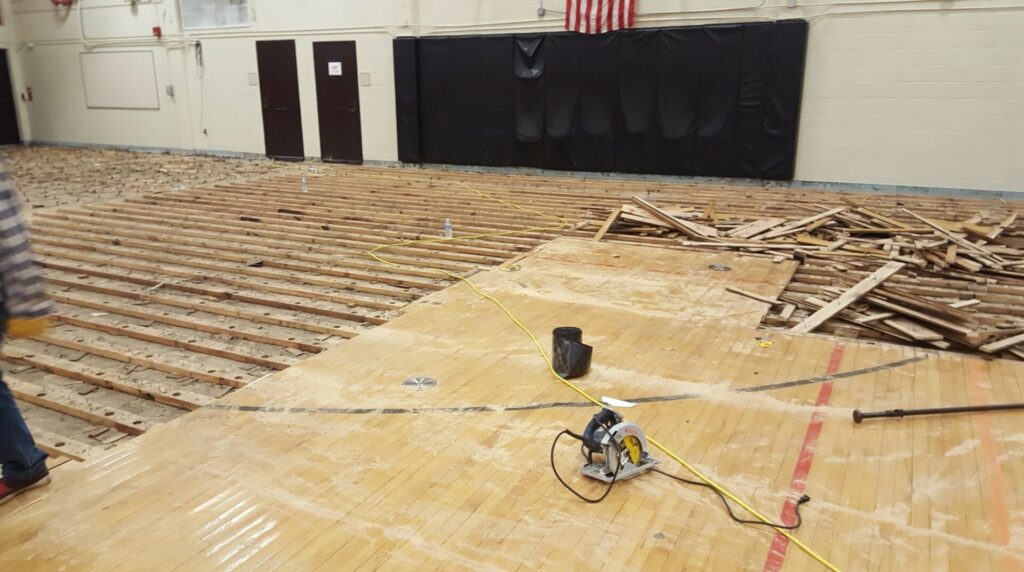
Cons:
- Higher Costs: The initial outlay for replacing flooring is significantly higher than restoring it, considering the costs of removal, disposal, and the purchase and installation of new material.
- Environmental Impact: Replacement generates more waste and uses more resources, which can be a concern for institutions aiming to maintain sustainable practices.
- Greater Disruption: The process of replacing flooring can be lengthy and disruptive, requiring more extensive downtime, which can interfere with school operations or other activities.
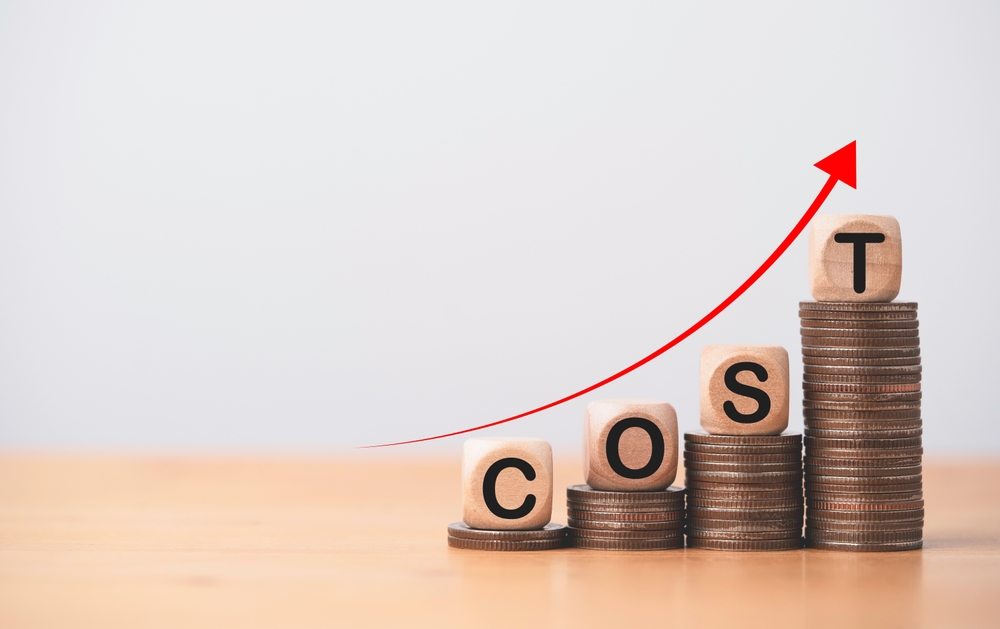
Future Trends in Sustainable School Flooring
As sustainability continues to be a key focus in the design and renovation of educational facilities, several future trends are emerging in school flooring that prioritise environmental responsibility, durability, and safety. Here are some notable trends that are likely to shape the future of sustainable school flooring:
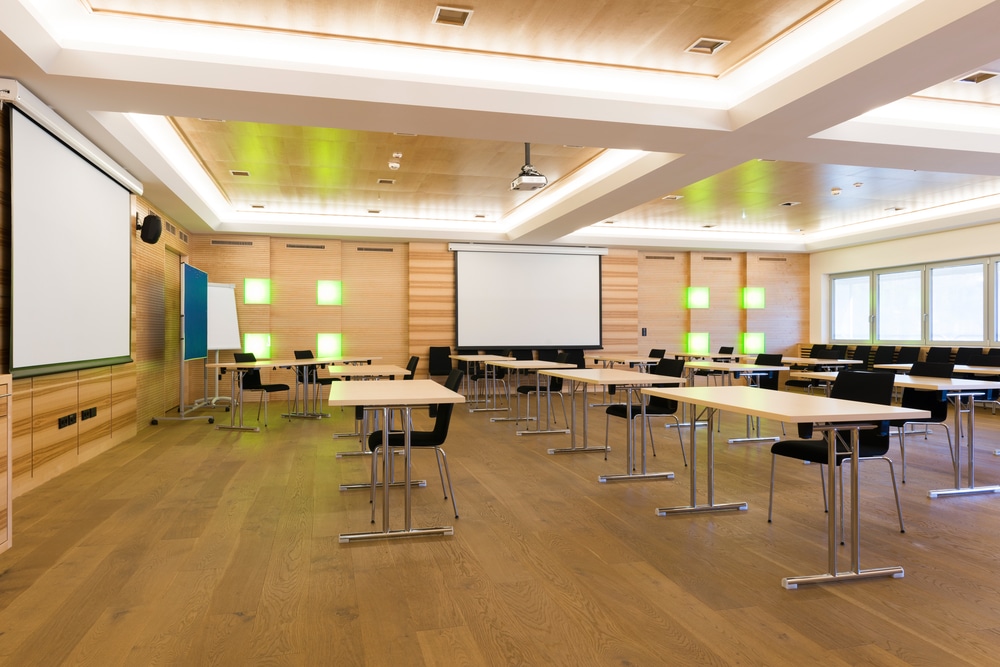
1. Eco-Friendly Materials
Schools are increasingly turning to flooring materials that have a lower environmental impact. This includes materials that are renewable, recycled, or sourced sustainably. For instance, bamboo and cork are popular due to their rapid renewability. Additionally, recycled rubber and PVC-free linoleum are gaining traction as durable and less environmentally damaging options.
2. Improved Indoor Air Quality
There is a growing emphasis on selecting flooring materials that contribute to healthier indoor air quality. Materials that emit low or no volatile organic compounds (VOCs) are becoming standard choices. This trend is driven by increased awareness of the impact of indoor pollutants on children’s health and learning environments.
3. Longevity and Durability
Investing in long-lasting materials reduces the need for frequent replacements, thus diminishing waste and the use of raw materials. Durability also translates to better economics over the life of the building. Materials like polished concrete, high-quality vinyl, and advanced composites that mimic natural wood but offer enhanced durability are becoming popular choices.
4. Ease of Maintenance
Flooring that requires less water, fewer chemicals, and reduced energy for cleaning is pivotal in sustainable building designs. Future designs might incorporate innovative materials that are stain-resistant and easier to clean without the need for harsh chemicals.
5. Recyclability and reusability
The end-of-life impact of flooring materials is a significant factor in their sustainability. The trend is moving towards materials that can be fully recycled or upcycled. Modular carpet tiles, for instance, can be replaced individually and are often made with recyclable materials, allowing worn tiles to be returned to the manufacturer for recycling.
6. Integrated Technology
Advancements in smart materials might lead to floors that can harness energy from foot traffic or improve air quality by capturing pollutants. Although still in their early stages, these technologies could revolutionise how flooring contributes to the environmental sustainability of school facilities.
7. Adaptive Designs
Flexible and adaptive design allows for spaces to be reconfigured according to need without replacing the flooring. This might include using more robust, multi-purpose flooring systems that can accommodate a variety of activities, reducing the need for specialised surfaces in different areas.
8. Visual Comfort and Design
Sustainable flooring is also evolving in terms of aesthetic flexibility, offering a wider range of colors, patterns, and textures that are produced in environmentally friendly ways. This helps create an inviting and stimulating learning environment without compromising on sustainability.
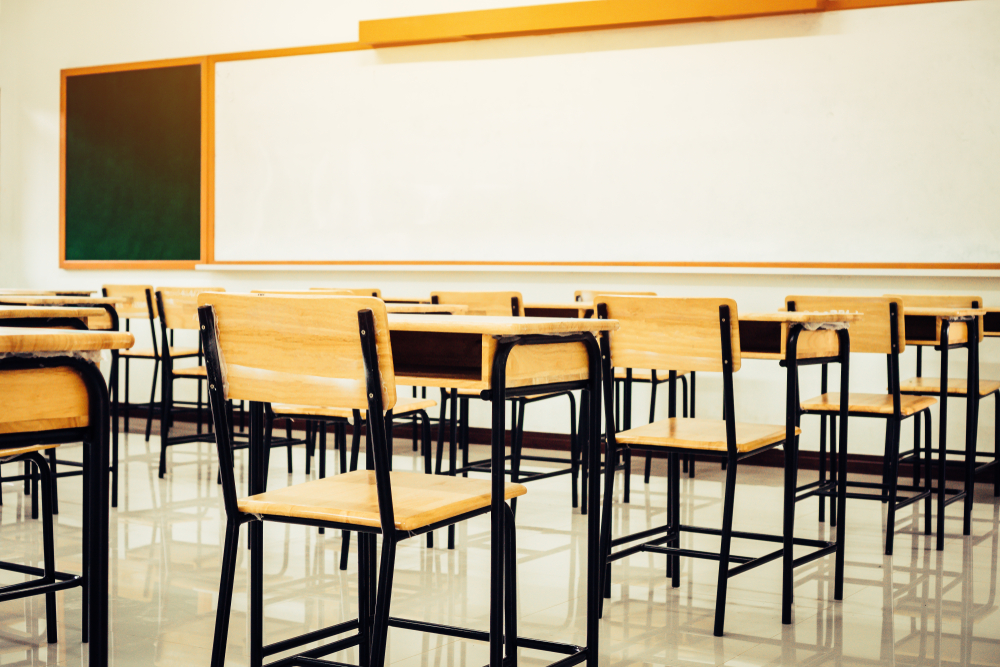
Conclusion
In conclusion, the debate between restoring and replacing Granwood flooring in educational settings hinges on a balance of cost, environmental impact, functionality, and aesthetic appeal. Restoring Granwood floors offers a cost-effective, environmentally friendly solution that aligns with the growing emphasis on sustainability in school infrastructure. It not only preserves the architectural heritage and reduces waste but also minimizes the disruption to daily school activities.
On the other hand, replacing old flooring with new can address deeper structural issues, provide a completely fresh aesthetic, and potentially introduce more advanced materials with better performance characteristics. The choice ultimately depends on the specific condition of the flooring, the school’s budget, and its long-term sustainability goals.
Schools are encouraged to consider their unique circumstances and weigh the benefits of each option carefully. By doing so, they can make informed decisions that uphold both their educational and environmental standards, ensuring their flooring choices support a healthy, safe, and inspiring learning environment for all students. This balanced approach will likely continue to evolve as new materials and technologies emerge, further enhancing the possibilities for sustainable school flooring in the future.
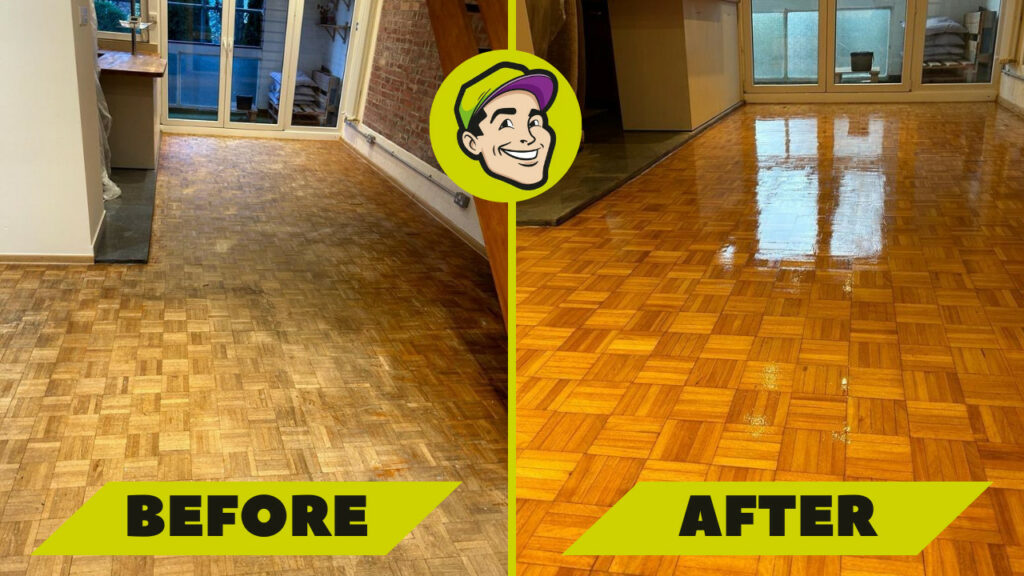

Sanding
We provide virtually dust-free sanding with our continuous belt machinery with mobile extraction units, giving you a safer environment for your family.
Oiling
This organic finish not only adds beauty to your home but also has exceptional water-repellent characteristics, making it easier to clean and maintain.
Waxing
This natural floor finish offers the softest and most mellow appearance – and leaves your floor able to breath.
Buffing
Using soft buffing machines (and hand-polishing where required) will bring a wonderful sheen to your newly-finished floor.
Repairs
We offer a full assessment of your wooden floors to determine what repairs are needed to provide the perfect working surface for the later stages of sanding, staining and sealing.
Restoration
We offer a comprehensive restoration process designed to address floors that are improperly fitted or damaged over time through wear and tear.
Request a fixed price quote for your wood floor restoration now
Simply enter your postcode below to get started.
Services
Wood Floor Sanding Wood Floor Restoration Wood Floor Scratch Repair Squeaky Wood Floor Repair Parquet Floor Sanding Parquet Floor Restoration Commercial Floor Sanding Church Floor Sanding Community Centre Floor Sanding School Floor Sanding Gap Filling Gap Filling with ResinCopyright © Mr Sander®
Privacy & Cookies Terms & Conditions Complaints Procedure Cancellation Rights Sitemap